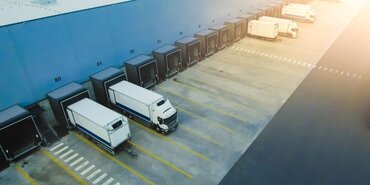TT Talk - Enclosed spaces include tank CTUs

Enclosed spaces present risks throughout the global supply chain ranging from ship holds and passageways through to silos and tank cargo transport units (CTUs).
There are estimated to be around 15 enclosed space fatalities each year in the UK alone, with 60% of these deaths involving people attempting to rescue colleagues who are already trapped or injured. Awareness training and robust procedures in this context will prevent serious injuries and save lives.
An enclosed space is a place which has limited openings for entry and egress, inadequate ventilation and one not designed for continuous worker occupation, and where serious injury may occur from hazardous substances or conditions (generally resulting from asphyxia). Tank CTU's used to transport bulk cargoes globally, including road tank trailers, tank railcars and (ISO) tank containers present prime examples of an enclosed space risk in the supply chain.
The air we usually breathe contains 79% nitrogen and 21% oxygen. Once the oxygen content of the air decreases or increases the associated risks change. Oxygen enriched atmospheres give rise to an increased risk of fire and explosion. Where reduced oxygen content is concerned, judgement becomes impaired and ultimately life can no longer be supported, even if the remaining content of the atmosphere is harmless.
Lack of oxygen is a silent killer; there are no obvious warning signs such as coughing or feeling breathless. Where the oxygen levels are sufficiently depleted the first sign is often that the individual will simply become unconscious. This can happen so quickly that there may be no opportunity to raise an alert. Where there are pockets of atmosphere lacking sufficient oxygen breathed, an individual will start to feel very weak and confused, unable to undertake the simplest of tasks such as reaching the exit of the enclosed space. Rescue operations are therefore time critical.
Advance and continuing atmosphere testing
Where it is essential that a worker enters a tank CTU, atmosphere testing in advance is necessary, but critically oxygen levels should be adequately monitored throughout the required activity. Even where the tank is certified to be clean and the atmosphere adequate to support life, undertaking any work within the tank, whether it be cleaning, polishing or grinding, gives rise to the possibility of changes to the atmospheric content of the enclosed space.
"undertaking any work within the tank. gives rise to the possibility of changes to the atmospheric content of the enclosed space"
Where access to the enclosed space is assessed to be unavoidable, adequate precautions must be taken. This starts with a risk assessment by a competent person of the work to be undertaken, followed by development and implementation of a safe system of work. This should include training and instruction in the issue of permits to work, training and instruction for enclosed space working, and monitoring and auditing to make sure that the system works on an on-going basis as intended.
The initial testing of the atmosphere inside the tank should be undertaken by a competent person using appropriately calibrated instruments to ascertain adequate levels of oxygen and acceptable levels of toxic and flammable vapours. A competent "watcher" should be physically present throughout the work, providing an immediate response in case of emergency and monitoring each stage of the work undertaken to ensure compliance with the defined safe system of work.
Risk assessment
Annex 8 of the ILO/IMO/UNECE Code of Practice for Packing of Cargo Transport Units (CTU Code) focuses on the risk assessment process covering items such as competence, working at height and emergency preparedness.
A risk assessment should consider as a minimum the following elements:
- The task
- The working environment
- Working materials and tools
- The competence of those undertaking the work
- Arrangements for emergency response/rescue
Access should only be allowed under a permit to work that assists in ensuring that a formal check is undertaken, confirming that all elements of the safe system of work are in place ahead of a worker being allowed to enter the enclosed space.
Additional training, instruction and signage should be considered. Specifically workers should be sufficiently trained to be alert to what is considered to be an enclosed space. It is important that workers are competent to undertake the specific task required, as well as being physically capable of entering and egressing from the tank container. Consideration may also need to be given where the person may suffer from claustrophobia or their fitness to wear and operate breathing gear.
It is vital to develop an established method of communication between those workers inside the enclosed space and those outside it. This serves as the first step in emergency response.
Prepare for the worst
Develop and communicate an emergency rescue plan. Regular drills should be undertaken to ensure effectiveness of the plan and familiarity of the workforce with procedures. The arrangements of the emergency rescue plan should be sufficiently communicated to the entire workforce who may ultimately need to rely on it.
Where things go wrong, the worker in the enclosed space is likely to be exposed to serious and immediate danger. It is essential to implement effective arrangements to raise the alarm quickly and trigger rescue procedures. The watcher should never enter the enclosed space before securing assistance and taking additional precautions. Consideration in this regard should be given to the equipment available and the capabilities of the nominated rescuers.
"The watcher should never enter the enclosed space before securing assistance and taking additional precautions"
For further information, please see TT Club's StopLoss "Confined spaces - Managing the risk of entering cargo transport tanks.
We hope you found the above interesting. If you would like further information, or have any comments, please email us, or take this opportunity to forward to any colleagues who you may feel would be interested.
We look forward to hearing from you.
Peregrine Storrs-Fox
Risk Management Director, TT Club
- Author
- Staff Author
- Date
- 04/06/2019





